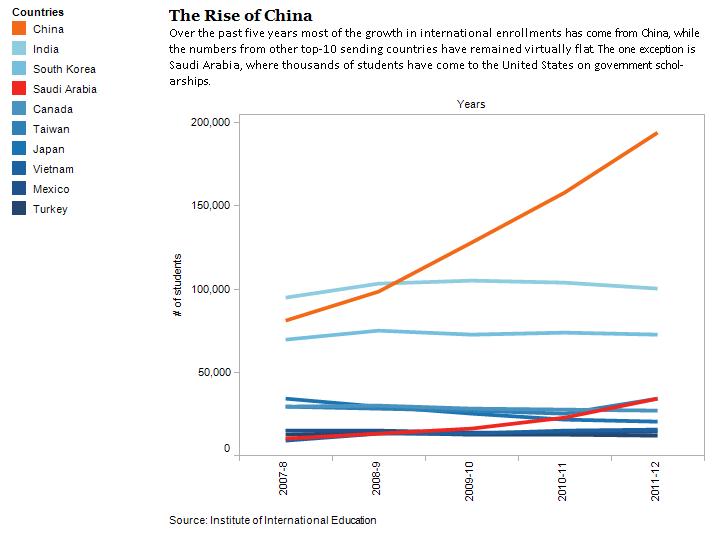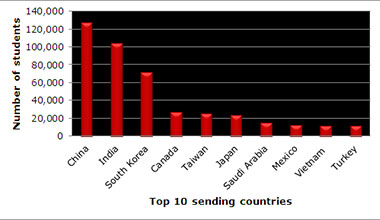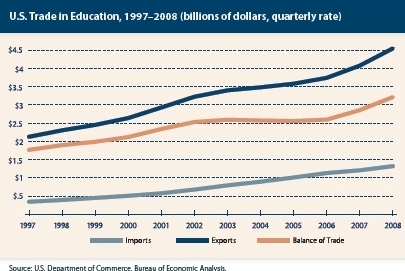For the past decades, some of the brightest and best of young Chinese left the country to seek educational and entrepreneurial opportunities overseas. Often, they went to the most privileged universities in United States, Europe and Canada. Then, they took top-tier jobs at multi-national companies and research institutes.
But now they’re coming home
Because there is more money in China. Growth rates are breathtaking. And new businesses find opportunities and capital more easily.
With its 8 percent annual growth rate, the Chinese economy has become the world’s second largest after the United States. After the financial crisis in 2008, while other major world economies were plagued by the dragging recession, China’s economy remained robust, hence spurring the tide of of some Chinese migrants returning.
The beginning of the twenty-first century witnessed soaring numbers of overseas Chinese migrating back home. According to statistics from the China’s Ministry of Education, from 2009 to 2011, 429,300 students who had studied abroad returned to their home country. In 2012 alone, more than 272,900 overseas students came back, up by 46.57 percent from the year prior.
Returning students have increased by an average of 36% per year over the past 5 years, pushing the total to more than 800,000. That dwarfed the entirety of all returnees back to China for the 30-year period from 1978 to 2008.
The returning trend shows no sign of mitigating, as a poll conducted in this January by a research team from Nankai University shows. The polls indicated that less than 10% of the nearly 2,000 undergraduate students surveyed had plans to immigrate to other nations after they finish their study abroad.
As the number of Chinese students at US universities surged to 158,000 last year, the number of “sea turtles” (or haigui, the Mandarin term for overseas-educated Chinese who come home from abroad) has also surged in what is a reverse-brain-drain trend.
As America has drastically axed the number of working visas available to foreigners — from 195,000 a decade ago to roughly 65,000 now — more educated Chinese have left the US, taking their skills with them. Data from US-based Ewing Marion Kauffman Foundation, more than 80 percent of Chinese who returned said that there were more opportunities at home than in the US.
As more and more overseas students are returning back to China, one big difference from previous generations who have made the same choice: the previous trend was to come back to China to work at universities or research institutes; nowadays, returnees are joining businesses or starting up their own enterprises off the ground. They might have been working abroad for several years and have seen the limitations of the foreign markets; they feel they can apply their own talent and experience to tap the greatest potential of the vast Chinese market.
Wang Mengqiu, 37, who was born in Sichuan province and went to the US a decade ago to obtain a master’s degree in computer’s science at UCLA.
Until 2012, she worked at a Silicon Valley startup producing network routers. Once the bubble burst, she and her husband — a fellow “sea turtle” who used to work at IBM — picked up and flew back to China where they consider opportunities are more promising.
Now, Wang is now the Vice-President of Engineering at Baidu, Chinese version of Google, while her husband is embarking on a startup to create a Chinese equivalent of Pinterest.
“I don’t think I would get the same opportunities in US, frankly,” Wang told Global Post. “Just last month, I went back to Silicon Valley to visit some friends. What I found out is they are doing the same things they were doing ten years ago. Nothing has changed. They are smart people, but they cannot get enough opportunities in the US.”
The tremendous rise in returning students since 2008 coincides with the government rolling out a wide-ranging series of initiatives and incentives aimed at appealing to highly educated citizens. Those benefits include better opportunity for career development, favorable tax rates, housing, more research project opportunities, and government awards.
One initiative, the Talent Development Plan (2010-20) launched June 2010, offers favourable policies on tax, housing and children and spouse resettlement for high-end talents willing to return to work in China.
China has also established more than 160 industrial parks encompassing more than 8,000 businesses to provide approximately more than 20,000 jobs for returnees.
The central government programmes for attracting overseas talents also include the 2008 Thousand Talents Programme; 2010 Thousand Young Talents Programme; 2011 Thousand Foreign Experts Programme; 2011 Special Talent Zone and the 2012 Ten Thousand Talent Plan. In line with the central government’s talent attracting strategy, by August 2012, 35 industries in 31 provinces and municipalities in China initiated a total of 2,778 local talent plans, such as the Beijing Haiju Programme, Jiangsu Seagull Programme and the Guangdong Pearl River Talent Plan. Under these programmes, more than 20,000 high-level overseas talents have been recruited.
However, the growth in Chinese students pursuing studies in the US has been exponential during the past decade: China sent 60,000 students to the US in 2000, almost all graduate students sponsored by the government; in 2012, 194,000 Chinese students went to the US, with most of the growth stem from increase of self-funded undergraduate students.
Overall, China started to lead all nations in sending students to US universities since 2008. Today, it sends five times more students to US institutions than the second-largest source, according to US State Department statistics.
Amid the upward trend in the number of Chinese returning, it does not ring true for the highly talented students who have obtained doctorate degrees, who are performing research or who have high-level work skills. According to a report released by the Central Chinese Human Resources Work Coordination, China is losing more highly talented people than any other country, and about 87% of those not returning are from science and engineering backgrounds.




Leave a Reply
You must be logged in to post a comment.